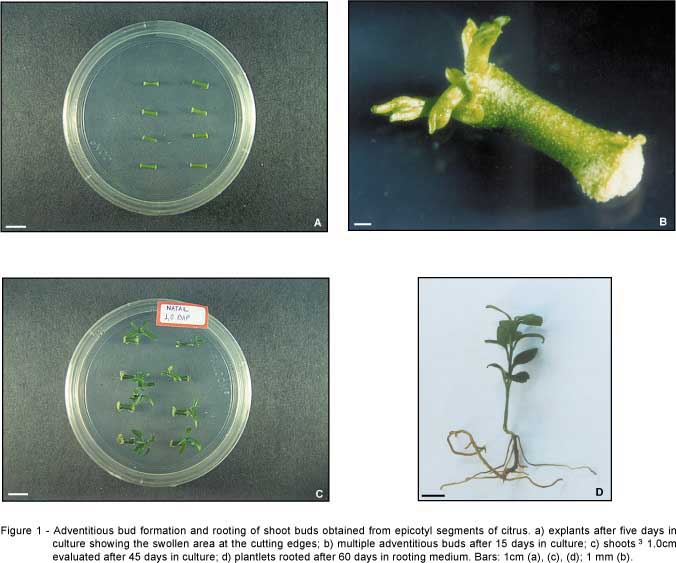Exogenous genes can be introduced in plants by genetic transformation techniques. However, an efficient tissue culture system with high rates of plant recovery is necessary for gene introduction. This work aimed to define organogenesis and plant regeneration protocols for sweet orange varieties Natal, Valencia and Hamlin (Citrus sinensis L. Osbeck) and Rangpur lime (Citrus limonia L. Osbeck) which can be used in plant transformation experiments. Seeds of which teguments were removed, were germinated in vitro and maintained in the dark for three weeks, followed by one week at 16-h photoperiod (40 µmol m-2 s-1) and 27 ± 2°C. Organogenesis induction was done by introducing epicotyl segments in MT medium with 25 g L-1 sucrose and different BAP concentrations. After adventitious bud growth, the shoots were transferred to MT medium with either NAA or IBA (1 mg L-1), or absence of auxin, for rooting. The best results were obtained with 1 mg L-1 BAP for bud induction and 1 mg L-1 IBA for rooting for all three sweet orange cultivars. The use of 0.5-2.5 mg L-1 BAP, followed by 1 mg L-1 IBA were the best growth regulator combinations for bud induction and rooting, respectively, for 'Rangpur' lime. The protocols presented in this work are suitable for associations with genetic transformation experiments for these cultivars.
adventitious bud; rooting; genetic transformation




